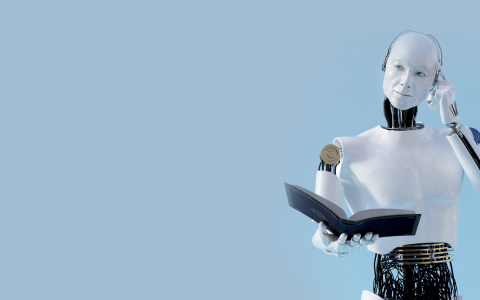
It’s impossible to say precisely how AI will disrupt the job market, so researchers at PwC have taken a bird’s-eye view and pointed to the results of sweeping economic changes.
Their prediction, in a new report out, is that it will all balance out in the end.
More automation in trucks, factories and elsewhere could cost around 7M existing jobs in the U.K. by 2037.
But the rise in robots and machine-learning software will make the country more productive over the next two decades, growing at a 2% annual clip, to put nearly the same number of jobs back in the system: 7.2M, PwC estimates.
To be clear, those new jobs won’t involve building robots or coding AI-powered software, which will make up only around 5% of employment, says John Hawksworth, PwC’s chief economist.
Instead, around 1.5 million, or 22%, of the new jobs will be in health and social work. Demand will rise for areas “that require a human touch and aren’t so easy to automate,” Hawksworth told Forbes, all the more necessary as the population ages.
Most of that growth, though, is just a by-product of a bigger economy.
More taxes will go into government coffers, which will mean more funding for the U.K.’s National Health Service. “Economic growth will promote higher tax revenues for the government to spend more on the NHS, including bringing in more staff,” he says.
Other studies have come to broadly similar conclusions, including one by Oxford Economics in December 2017, Hawsworth adds.
The public and press have become obsessed with the notion that AI will blow a gaping hole in the global economy and leave us all jobless and penniless, but they tend to tend to dismiss the potential productivity gains that AI will bring to boost GDP, says the economist.
Such shifts and rebalancing have happened before, albeit in a more painful way. “In previous industrial revolutions in the U.K., huge numbers of people moving from farms to factories had to develop new skills. Initially that was bad news for people who didn’t want to make that adjustment.”
The Nottingham weavers who were replaced by automatic looms didn’t benefit from a welfare state or government programs aimed at retraining people.
These modern programs will probably become more visible in the coming years.
France’s President Macron has recently pushed for an $18B training program to help lower unemployment, and the British government also announced a national retraining program in November 2017, in partnership with industry bodies and trade unions.
That may be helpful, as the coming shift will affect everyone, even consultants who write reports about the impact of AI on jobs.
When PwC combed through OECD data for jobs most likely to be automated, it was a task too big for humans to do quickly.
“We analyzed it using machine-learning algorithms,” Hawksworth says. “There’s a sort of irony in it.”



